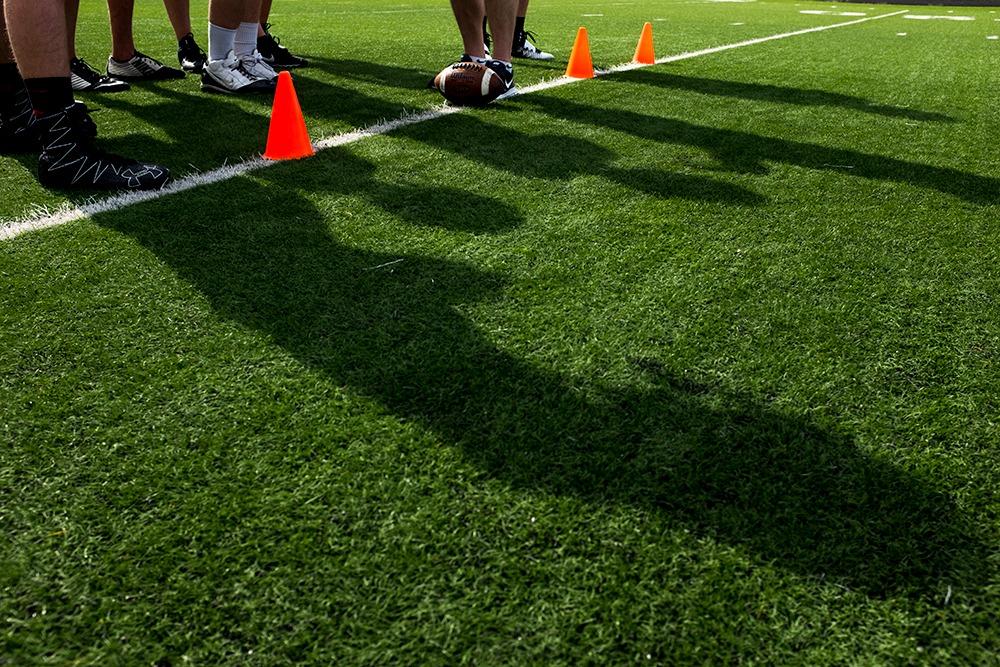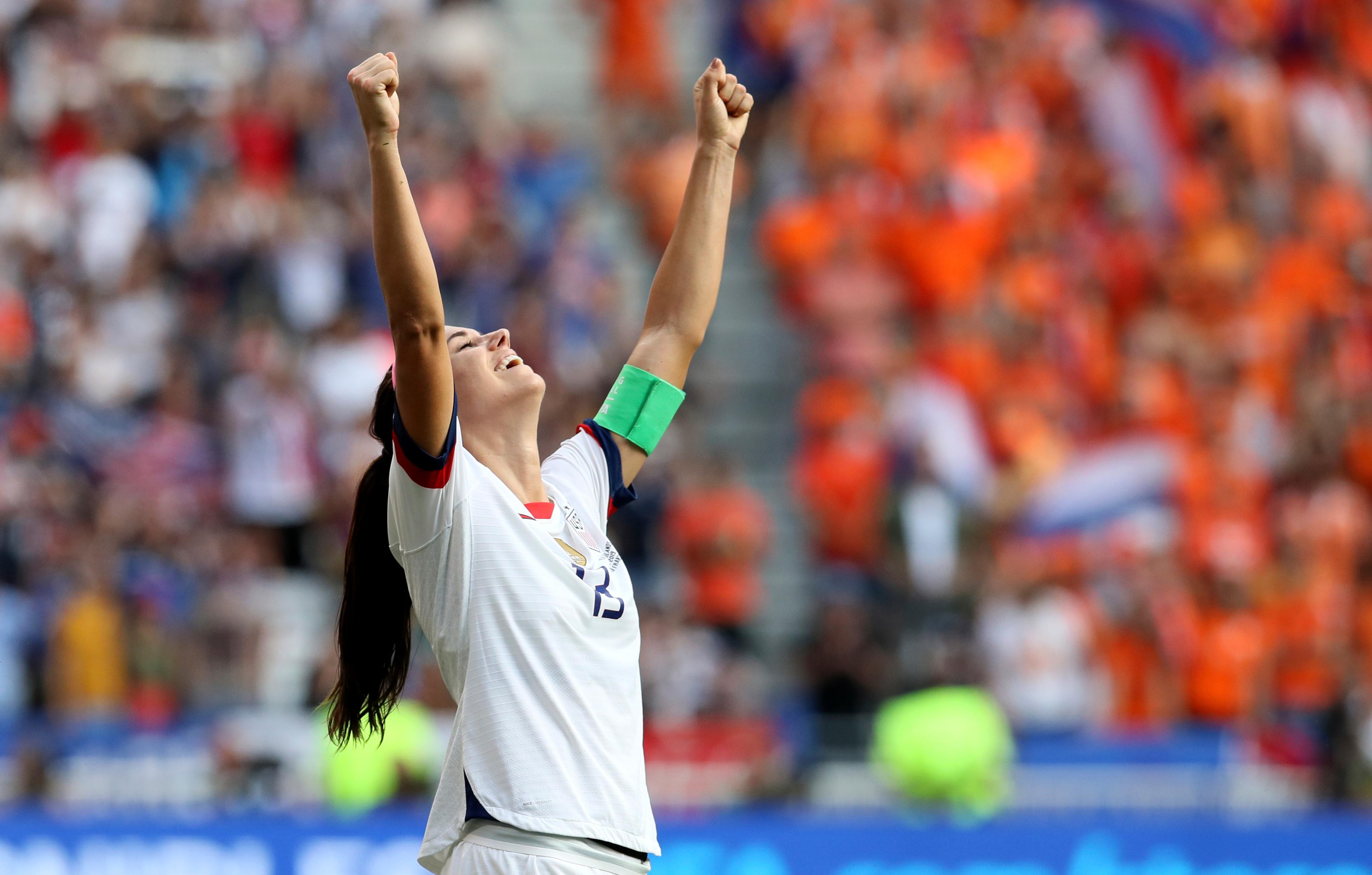
I recently asked my daughter Julia why she wanted to go to the Women’s World Cup Tournament, why the U.S. Women’s National Team meant so much to her? She’s 15, a soccer player and a major soccer fan.
Her reply came as quick as a Megan Rapinoe buzzsaw strike: “Is that even a question?!”
Another dumb dad query.
Still, we share a love of the sport and we got a chance to celebrate it together, watching from the upper reaches of a stadium in Lyon, France as the U.S. won the Women’s World Cup on Sunday.
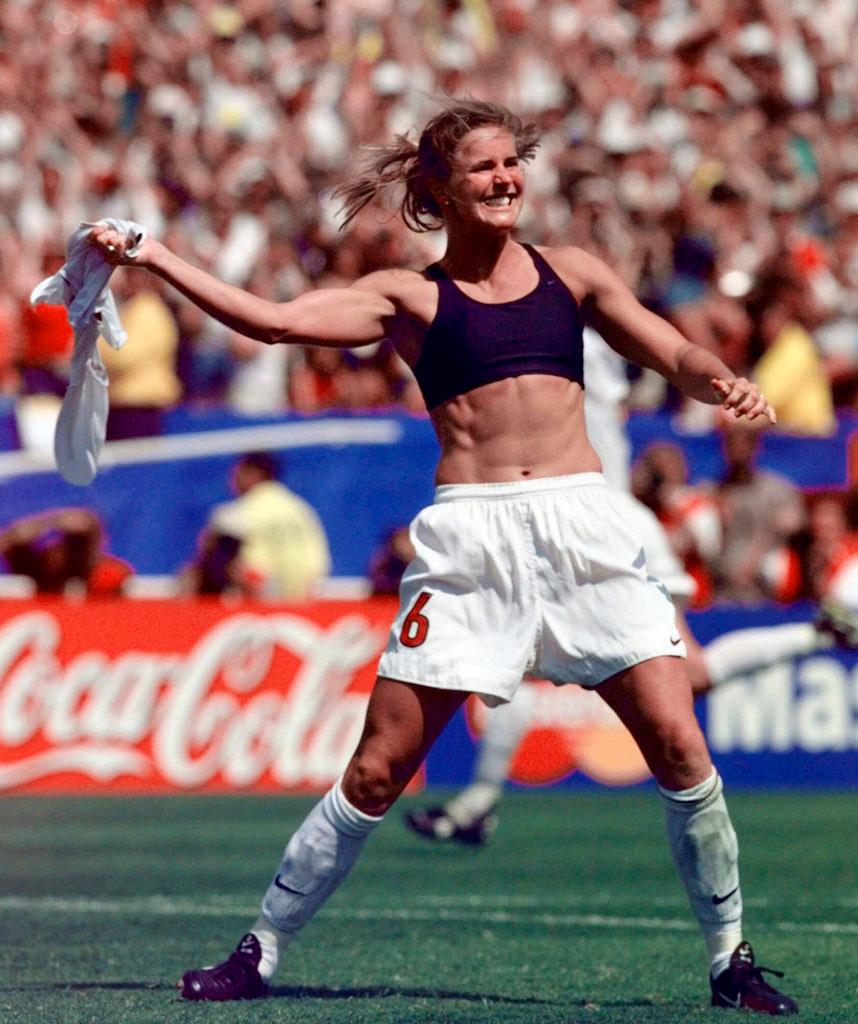
It was the next wave of the soccer tsunami that started in 1999. That year the U.S. hosted the tournament to enthusiastic crowds and a big TV audience, a cultural moment capped with the iconic image of Brandi Chastain stripping off her jersey after she hammered home the winning penalty kick.
On Sunday, the 2019 team set a new standard: A dominant team in an increasingly competitive field, supported by a huge and loyal fan base.
For young women who play soccer, especially Americans, the World Cup is a pilgrimage, the chance to commune with others of their kind and pay tribute to the likes of Alex, Tobin and Carli (no last names needed for these fans). The passions this team inspires can run pretty deep.
Case in point: We met a mom and a daughter from New Jersey on a packed tram headed for the Stade de Lyon, the site of the final games. The daughter is a college senior, playing ball at Trinity College in Hartford, Connecticut. Her mom got them tickets to the last few games, but the day of their departure, weather cancelled their flight out of Newark and all the other nearby airports were closed.
It looked like there was no way they’d make it to France. But the mom was able to book the last flight out of Montreal, a six-hour drive away. They drove through the night to catch a red-eye to Paris.
“There was no way we were going to miss this,” the mom said.
“No way,” her daughter added.
We get it. Our family’s connection to this team runs deep. For our second date, my wife Heidi and I watched the U.S. Women’s National Team play China in the 1999 World Cup.
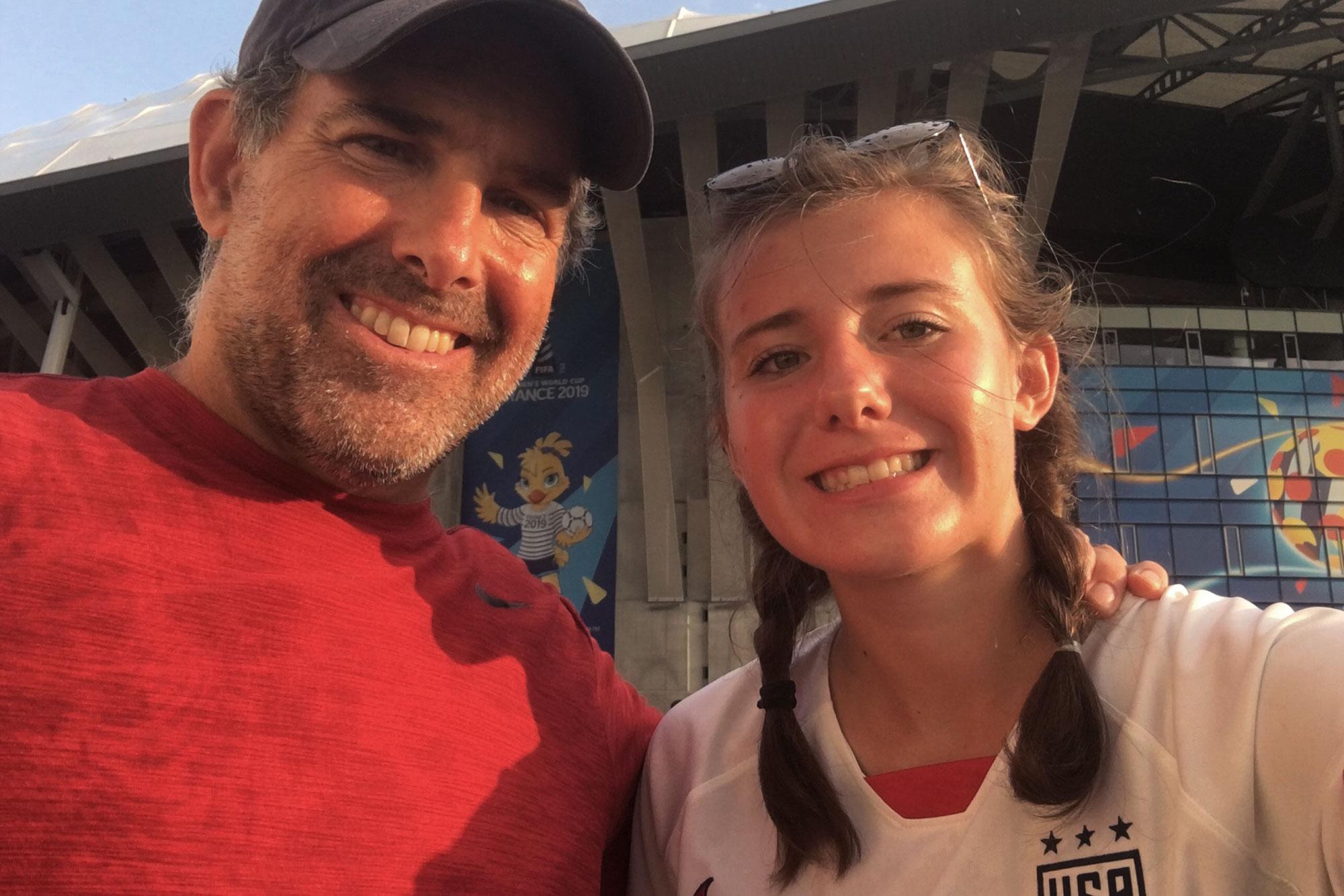
When we had a daughter, we inducted her into the soccer club early. My earliest memory of Julia playing soccer was when she was about four: She was dribbling the ball up and down the pitch, just giggling the entire way.
Later Julia discovered a DVD of the documentary called Dare to Dream. It’s the story of the U.S. Women’s National Team and the “99ers,” the groundbreaking pioneers on that team: Chastain, Mia Hamm, Julie Foudy, Joy Fawcett, Kristine Lilly. Julia must have watched that movie dozens of times.
“It was inspiring,” she told me recently.
What she got was the story of women fighting to win, fighting for recognition and respect for their sport and, most importantly, doing it together, collectively, as a team. Heidi’s generation could root for women’s sports stars, like Billie Jean King or Chris Evert, but those were standout individuals. Once the U.S. Women’s National Team caught fire, girls like Julia had an entire team to look up to, a group of players who had each found their own way
And that’s what she has grown up with. She’s studied the grit of Carli Lloyd, the grace of Mallory Pugh, the pinpoint precision passing of Lindsey Horan, the fearlessness of Megan Rapinoe, the versatility of Crystal Dunn and the collective spirit of a confident team that refuses to quit.
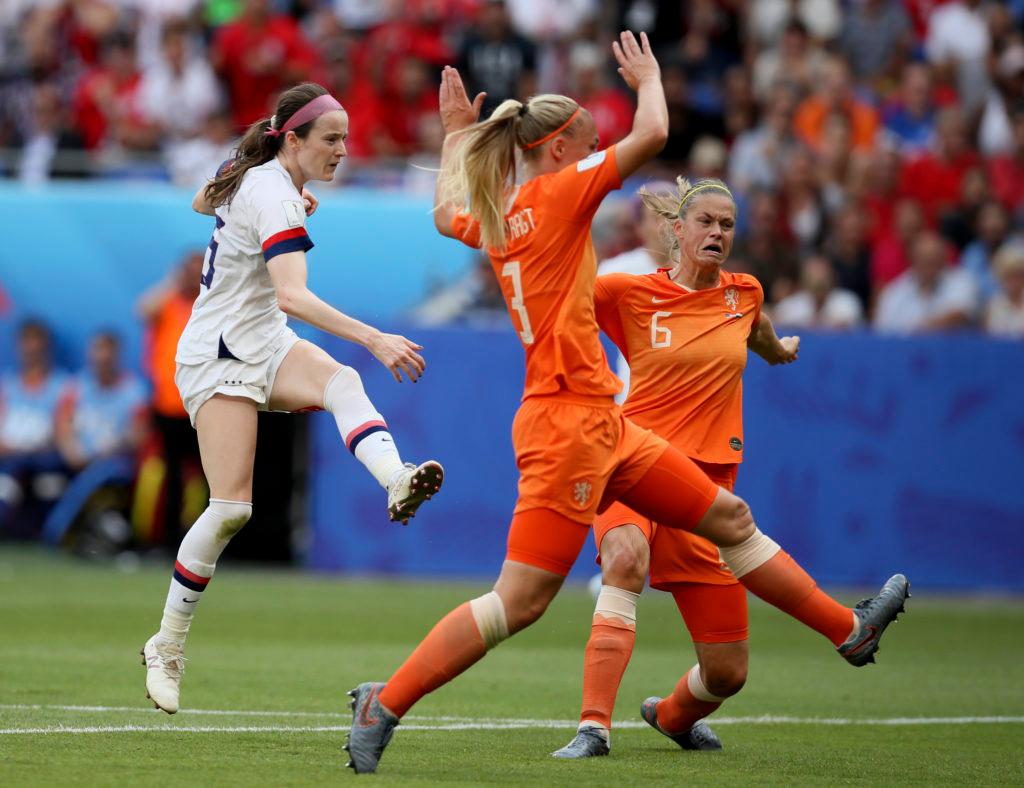
In France this month, it’s been like a full-on gathering of Girl Power Nation. There are little girls, here with their families, in Morgan and Rapinoe jerseys. There are teams of teenage girls, like one from Virginia we met, rushing into the stadium screaming the national team chant: “I believe that we will win! I believe that we will win.”
And there are women here, some in old school Lloyd or even Hamm jerseys, who met playing back in the day, back together for the reunion tour. As we watched the team play in a stadium of flag-waving, face-painted U.S. fans.,
Julia told me, “It was amazing to see so many people coming and supporting this team, all the way from the US."
In the two decades since the ‘99ers, women’s soccer has grown in prominence, and with this World Cup, it hit a new level: people around the world watched in record numbers, Nike announced the U.S. women’s team jersey is now its top selling ever in one year, FIFA declared it’s looking to expand the tournament in 2023. The players themselves seemed to be on a whole new level, too, right down to Rose Lavelle’s final surgical strike, the one that sealed the World Cup trophy for the Americans.
They’ll soon be returning to the U.S. and to their next fight for recognition. The team has sued the U.S. Soccer Federation for equal pay and equal treatment. Now, they’ll do it with the enhanced credibility of being four-time World Cup champions on top of their four Olympic gold medals. They’re arguably among the greatest sports teams in U.S. history, no matter the sport, no matter the gender.
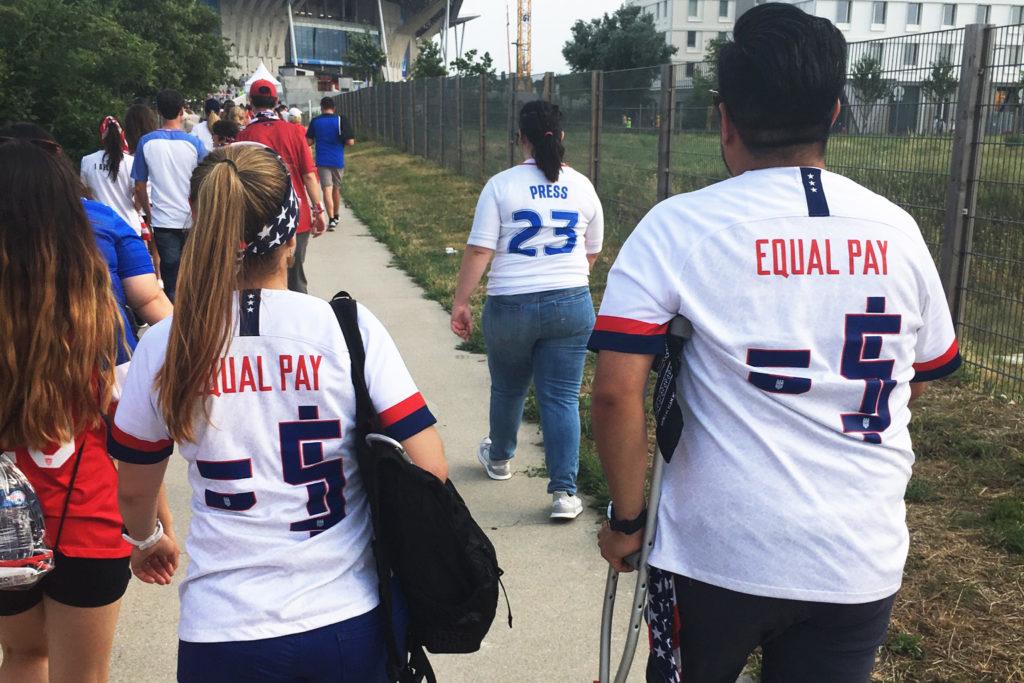
That fight makes rooting for the U.S. Women's National team feel like something beyond normal fandom. For many backers, the team has become a cause. At the final matches, we saw fans with faces painted “U$A pay” and wearing shirts saying “= $”, in reference to the larger dispute. Many fans we spoke to said they both back the team on the field, and the broader principles of equality they’re fighting for off it.
We can now see the pioneering legacy of the ‘99ers, amplified by their descendants. It’s not just the right to play, but the right to be treated as the elite athletes they are.
And Julia will be able to say she was there to watch it all unfold.
Editor's Note: A previous version of this story misspelled Carli Lloyd's name.

